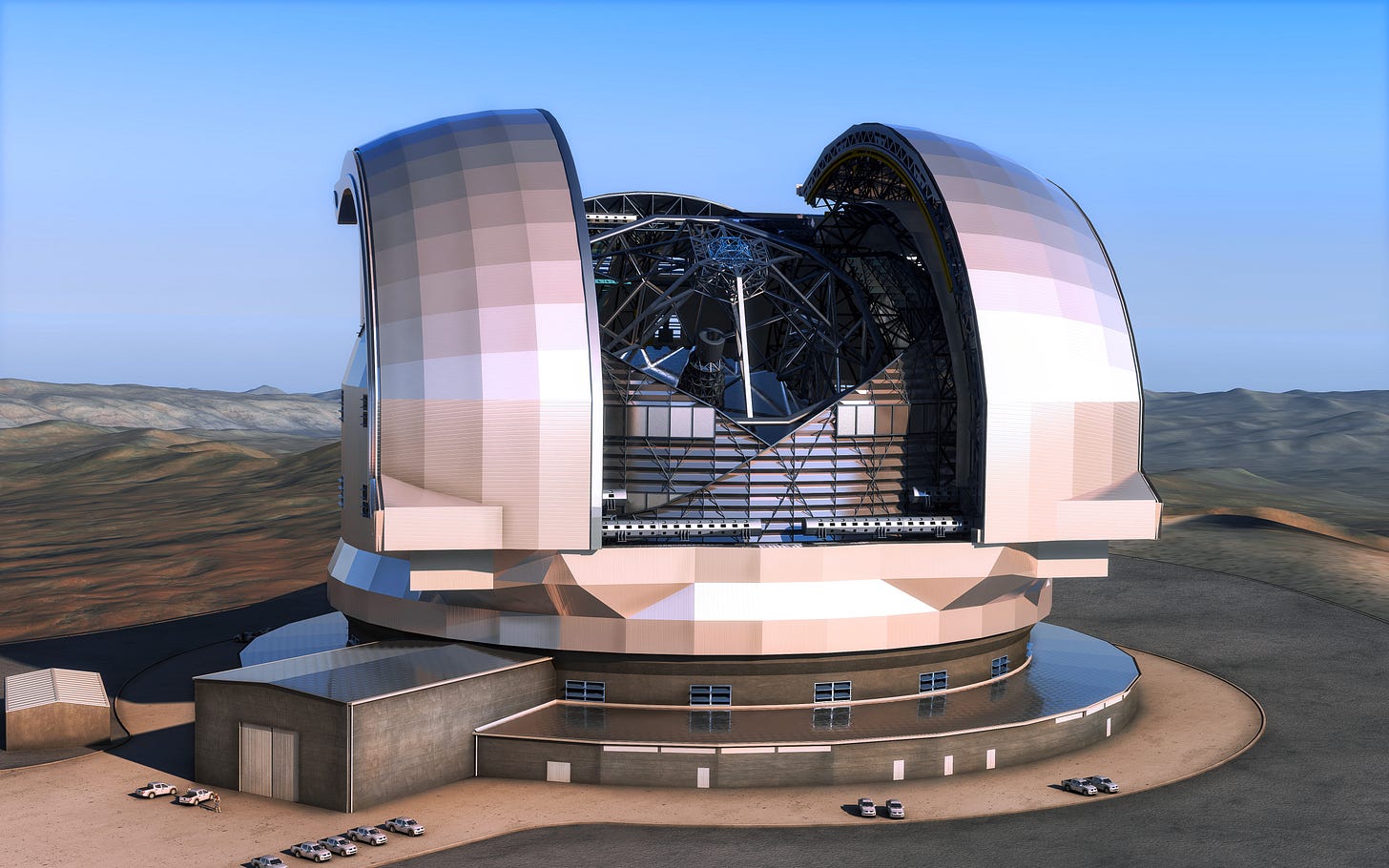Extremely Large Telescope: The Most Powerful Telescope Yet
Currently under construction by the European Southern Observatory (ESO) in Chile, the Extremely Large Telescope is set to become the most powerful optical and near-infrared telescope in the world
Currently under construction by the European Southern Observatory (ESO) in Chile, the Extremely Large Telescope (ELT) is set to become the most powerful optical and near-infrared telescope in the world once it begins operations in 2029.
Upon its completion, the ELT will feature the largest primary mirror, measuring 39.3 meters in diameter. The total construction cost is estimated at $1.51 billion, with annual operating costs around 50 million euros. These costs cover maintenance, staffing, and the development of new instruments. The telescope is being constructed on Cerro Armazones in Chile's Atacama Desert, a location chosen for its clear skies and high altitude. It is projected to achieve "first light"—its initial scientific observations—by 2028.
With its 39.3-meter primary mirror, the ELT will possess 13 times more light-gathering power than the world's current largest optical telescopes. Additionally, it will include the largest secondary mirror ever built, measuring 4.2 meters; this is even larger than the primary mirrors of many existing telescopes. The tertiary mirror is also significant, with a diameter of 3.8 meters.
The ELT will be 15 times more powerful than the Very Large Telescope (VLT) and over 250 times more powerful than the human eye, providing a light-collecting area of 978 square meters. This capability will enable it to detect extremely faint objects, such as galaxies from the early universe and small exoplanets orbiting distant stars. The ELT's resolution will be 16 times sharper than that of the Hubble Space Telescope and over four times sharper than the James Webb Space Telescope (JWST), thanks to its large aperture and adaptive optics systems that counteract atmospheric distortion in real time. This means it can distinguish objects just a few milliarcseconds apart, effectively allowing it to see a coin on the Moon from Earth.
The ELT will observe in optical and near-infrared wavelengths ranging from 0.4 to 14 microns, making it ideally suited for studying exoplanets and their atmospheres, the first galaxies and stars, black holes, dark energy, and the formation of planets and star systems. It will have the capability to directly image Earth-like exoplanets and analyze their atmospheres for biosignatures such as water vapor, oxygen, or methane. The ELT will search for planets in habitable zones around nearby stars—something no existing telescope can achieve at this level of detail.
This telescope will see deeper, sharper, and clearer than any ground-based telescope that has come before it. The ELT represents a quantum leap forward in our ability to explore the universe, enhancing our understanding of everything from the first stars to the potential for life on other planets.
Other large telescope projects are also underway. The Large Magellan Telescope is currently under construction in Chile, while the Thirty Meter Telescope in Hawaii has yet to begin due to a land dispute on Mauna Kea. Additionally, there is a proposed Colossus Telescope with a primary mirror measuring 74 meters in diameter. Several space-based telescopes are also in development, including the Nancy Grace Roman Space Telescope, Habitable Worlds Observatory (HWO), LUVOIR, and the Origins Space Telescope, designed to replace the JWST.
With these advanced telescopes, our ability to observe the sky is set to transform dramatically. I am eager to see these projects come to fruition, which will make our exploration of the universe more detailed and exciting.
For more information about technologies, check out my book titled "The Book of One." For additional details, visit my website at www.booksofone.com.





